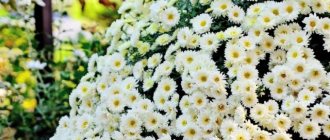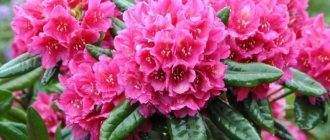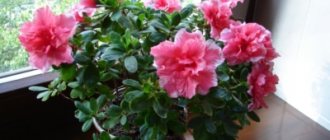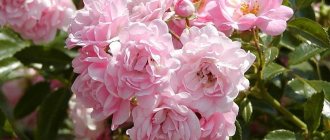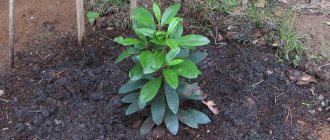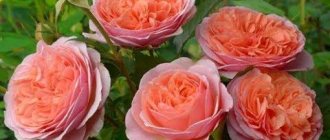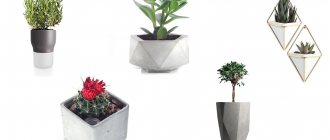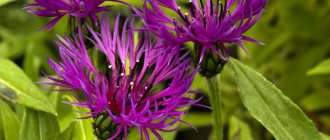If previously we were accustomed to calling heat-loving indoor rhododendrons azaleas, today the trend has changed. Winter-hardy deciduous rhododendrons also began to be called azaleas. Unlike evergreen rhododendrons, deciduous azaleas are more suitable for beginners: they winter well without shelter, are unpretentious and also have very beautiful autumn foliage color. At the same time, their flowering is no less luxurious. I’ll tell you about my favorite deciduous azaleas in this article.
Deciduous rhododendrons - winter-hardy species and varieties, growing experience. © kukimohuko
Care
Owners of luxurious winter-hardy rhododendrons need to regularly water them, feed them, prune them, spray them to prevent diseases, mulch them and, if necessary, build a shelter. It is advisable to periodically weed and remove weeds. The plant requires the attention of a gardener. With careful care, luxurious shrubs will delight you with bright inflorescences from mid-spring.
Watering and fertilizing
Growing deciduous rhododendron involves maintaining the required level of soil moisture. The tree trunk circle should not be allowed to dry out; it is advisable to constantly water it moderately. The shrub responds well to light sprinkling with warm water. It is better to spray the plant during cloudy weather. It is not recommended to water the bushes with cold tap water. Fertilize rhododendron two to three times during the season. To do this, use specialized fertilizers with an acidic reaction, which quickly dissolve.
Important! Cultivation of rhododendron does not involve the use of ash, because it contributes to the alkalization of the soil.
They practice feeding deciduous rhododendron with heather compost, the components of which are:
- top layer of forest pine soil;
- needles, branches, bark, cones of coniferous plants;
- old stumps;
- moss;
- red high peat.
The ingredients should be placed in a compost bin. So they will decompose for two to three years until a homogeneous granular mass is formed. Then the mixture should be sprinkled in small portions around the bushes 2-3 times during the growing season.
To maintain the acidic reaction of the soil, every 10 days it should be watered with a solution prepared using a bucket of water and a special preparation based on lactic acid bacteria or 1 tsp. citric acid. In practice, colloidal sulfur is also used; for this, a handful of the substance is scattered under the bush every 2-3 years.
Video: rhododendron - care and watering
Loosening and mulching the soil
When caring for bushes, the soil is not loosened or dug up, so as not to damage the surface root system of the rhododendron. The tree trunk circle of the plant must be mulched using tree bark, pine needles, peat or wood chips. It is not recommended to use manure, black soil and lowland peat for covering. It is advisable to add mulch 2-3 times during the season. This measure will protect the soil from drying out and avoid loss of nutrients.
Trimming and shaping
Deciduous rhododendrons are able to independently form a compact crown. Therefore, pruning is done only as needed after 3 years. Manipulation is advisable when the kidneys are still sleeping. In spring, frozen and dry growths are removed . Sections of large branches should be treated with a disinfectant composition.
Important! A significant part of rhododendrons are poisonous plants. Therefore, after working with the bush, wash your hands well and do not allow parts of the plant to get inside the body.
The foliage on the bush appears simultaneously with the inflorescences and continues to grow after flowering. To preserve decorativeness and ensure the full formation of flower buds, wilted flower stalks should be unscrewed or carefully cut off.
1 - before trimming; 2 - after trimming. Within twenty days after the end of flowering, it is recommended to shorten last year’s shoots by 1/3 or 1/2 of the length. This pruning is used to protect flower buds under the snow and keep the bush compact.
Video: how to prune rhododendrons
Shelter for the winter
Deciduous rhododendrons are characterized by resistance to severe frosts. Therefore, there is no need to cover adult bushes. Seedlings need protection during the first few years after planting. Rhododendron should be covered at a constant low temperature of -10°C. Using protection in warmer weather can cause damage to the root collar of the bush, which will begin to rot. This situation is possible during a sudden change in temperature or a prolonged thaw.
In the autumn months before frost, the shrub is moistened abundantly, the root collar is covered with a layer of mulch 5–20 cm thick, depending on the size of the plant. To do this, use rotted sawdust or pine bark. To ensure air-dry protection, it is advisable to build a plank frame, or you can use arcs and cover the structures with spunbond material. The shelter should be slightly larger than the bush so that the branches do not come into contact with the structure. A gap is made at the bottom of the frame to ensure air exchange.
PZHM Elite
The name is quite interesting.
This plant is compact, characterized by lush flowering, and can tolerate temperatures down to minus thirty-two degrees.
The flowers have a pink-crimson hue, their shape is cone-shaped, collected in tassels of four to nine pieces.
PZHM Elite
Landing
Rhododendron is a long-lived garden plant. It can grow in one place for thirty years.
Did you know? Rhododendron Pontine and Yellow are especially poisonous, and Pointed has medicinal properties: it treats heart, stomach, and infectious diseases.
Therefore, before planting deciduous rhododendron, choose a place taking into account the following factors:
- the ability of the bush to grow;
- size of an adult plant;
- slow growth during the first two years;
- the preference of a culture to grow in a group with similar species.
Rhododendron should not be planted near trees with the same shallow root system. When planting a bush with buds in a permanent place, it is advisable to remove them to speed up the rooting process.
Landing dates
It is preferable to plant seedlings in the spring. Young bushes are planted in pots throughout the entire growing season. September is also a favorable time for this procedure. Cloudy and damp weather is ideal for this event.
Choosing a seedling and place to grow
To enjoy the spring flowering of a gorgeous rhododendron bush, you need to choose the right variety, planting location, and prepare the soil. The tone of the bush's future inflorescences should be in harmony with the overall decor of the garden plot. All varieties of deciduous rhododendron perfectly adapt to the weather conditions of Russia, and even the northern zone, with the exception of capricious exotic specimens that are not suitable for growth in our climate.
Buy planting material from reputable professional gardening stores or nurseries to get an original plant. The best option would be to purchase acclimatized seedlings. Foreign plants may not tolerate harsh winter conditions because the climate of European countries is milder. After purchasing a rhododendron seedling in a pot, you need to prepare it for planting. The dead roots of a rhododendron seedling, which have been in contact with the walls of the container for several years, create an impenetrable barrier to living shoots. This factor negatively affects the development of the plant.
Therefore, when removing the earthen lump from the container, you should inspect the roots, and if there are dead ones, carefully trim them. You can make several cuts across the lump. This technique promotes better growth of healthy roots. It is advisable to plant the plant with a completely preserved earthen lump . This is done provided that the condition of the root system is good. If necessary, you can straighten the roots, but it is not recommended to completely remove the soil.
Important! It is not recommended to place rhododendrons near birch, maple or oak.
You should not cultivate rhododendron in completely open areas and full sun, because the leaves of the bushes may burn out. The area where the plant is planned to be planted should be moderately shaded. A suitable place is near a building or nearby tall trees: pine, spruce, larch. It is also advisable to protect the site from winds, spring and summer flooding due to melting snow or during heavy rainfall. Shrubs will feel comfortable near a reservoir or pond.
Soil preparation
Good growth and development of the crop can be ensured by planting the plant in acidic, loose and breathable soil. Such soil should be prepared so that the plant takes root in a new place. For this purpose, one part of garden loamy soil, extracted from a hole, is mixed with two parts of components that give an acidic reaction: red high-moor sphagnum peat, fallen pine needles. To keep the substrate loose, it is advisable to add sand. Instead of high peat, you can use sphagnum . All ingredients should be mixed thoroughly. You can use purchased soil for planting rhododendron.
Important! It is not recommended to use only an acidic substrate as soil without mixing it with garden soil, because it does not get wet well and dries quickly.
Landing algorithm
A characteristic feature of the fibrous root system of deciduous rhododendron is its superficial growth in width. In this regard, the planting hole should be two to three times wider than the size of the seedling. The recess should be filled using the prepared substrate. Before planting, the soil mixture can be fertilized with superphosphate or complex mineral fertilizer. The amount of bait should be 70 g per hole. The bottom of the recess is covered with a layer of drainage approximately 15–20 cm thick. For this purpose, you can use, for example, expanded clay, broken brick combined with sand.
The prepared acidic substrate is poured into the recess, after which the seedling should be lowered. At the same time, the root collar of the shrub should not be buried: it should rise above the ground level by about 2-3 cm. Neglect of this condition can provoke a lack of flowering, as well as the death of the plant. Sprinkling the roots with soil, lightly compact it so that voids do not form.
The trunk circle is protected with a small earthen roller, then the young plant should be watered abundantly. They practice adding growth and root formation stimulants to the water: “Kornevin”, “Heteroauxin”, “Epin”, “Zircon”. After two to three weeks, the soil around the bush should be leveled.
Video: how to plant rhododendrons
Canadian rhododendron
Canadian rhododendron is a deciduous, low-growing member of the genus, which does not exceed 1 m in height (1.2 m in width).
It has smooth branches, oblong oval or narrow-lanceolate leaves, up to 6 cm long (they are slightly hairy above and densely hairy below). The edges of the leaves are slightly curled, dull bluish-green above and glaucous below.
The shoots are thin when they are young - they have a bright yellowish-red tint, but with age they become grayish-brown, often with a bloom. The flowers are collected in inflorescences of 3-7 pieces and bloom even before the leaves appear. The corolla is purple-violet or pinkish-purple, two-lipped, and due to the peculiarities of its dissection, it seems that it consists of petals.
Flowering of the bush begins at the age of three and is observed in May-June.
The same capsule acts as a fruit, only in this case the seeds are small and numerous (fruiting begins at 4-5 years of age, and the seeds ripen in September-October).
In the wild it grows in river valleys, in wetlands and open swamps, in coniferous and mixed forests, as well as in open rocky areas.
Important! This is one of the few deciduous species of rhododendron, whose range extends far to the north (Canadian rhododendron calmly tolerates temperatures down to -32 ° C).
It is recommended to plant the plant on the edges and rocky areas, in loose, moist and slightly acidic soil (pH 5.1-6.4). This species grows relatively quickly, adding 6-8 cm annually.
How to determine which subvariety it belongs to
Today, this shrub of the heather family has more than a thousand subspecies and is widespread throughout the world. There are two types of rhododendrons - evergreen and deciduous. In fact, the difference between them is not so significant and lies in the fact that deciduous rhododendrons, unlike evergreen ones, are completely covered with flowers, and at the end of the season they first change the color of the leaves and then partially shed them.
Rhododendron
Important! Deciduous rhododendron has more stable garden characteristics; it is not so capricious and demanding of care.
Rhododendron blossom
All gardeners expect unique and powerful flowering of the bush every year. Despite their attractive appearance all season long, it is the luxurious inflorescences that create maximum decorative value and captivate millions of eyes.
When does rhododendron bloom or flowering time?
The timing of flowering depends on the climatic conditions of a particular area and year, the variety and condition of the plant. Typically the flowering period lasts from April to June. Early flowering species (Daurian, Canadian, Ledebura) bloom in mid-late April and in early-mid May they stop blooming.
Then the evergreen large-leaved species begin to bloom in early to mid-May, and are soon joined by deciduous species and varieties based on them.
How long or how long does rhododendron bloom?
The flowering period for different species and varieties is a different number of days, on average 16-20 (30-45). The duration of flowering depends on many factors: amount of light, temperature, species characteristics, amount of nutrients, etc.
Care after flowering
To ensure that the “rose tree” blooms profusely every year, break out the inflorescences immediately after they have bloomed (there will be no seeds!). The inflorescence at the base breaks off effortlessly with your hands, but you need to be careful not to damage the young shoots.
This procedure will help the bush direct all its forces to the formation of lateral buds and abundant flowering next season. It will also become more lush, because not one, but 2-3 young shoots will appear at the base of the inflorescence.
Then water the plant generously and feed it with potassium-phosphorus fertilizer.
It is especially important to break out the inflorescences of large-leaved species. Rhododendron Katevbinsky "Grandiflorum" (Grandiflorum)
Rhododendron Katevbinsky "Grandiflorum" (Grandiflorum)
The entire color palette in one group
What is a fuzzy group?
Rhododendron planting and care, growing from seeds
Rhododendrons, both large and small, are always the strongest color accents in the garden. These shrubs cannot be outshone or surpassed. Becoming the center of attention and creating the impression of soloists, rhododendrons revolutionize the idea of the possibilities of using color. And it is the main trump card of rhododendrons - bright explosions of color - that offer a new way to reveal blurry plantings. These are groups of rhododendrons that combine varieties with different shades of the same color. Such groups are like watercolor visions, they enhance the beauty of each plant and are always perceived as something special - a painting come to life or an idyllic photograph from a magazine. Although, by their nature and principles of composition, blurred groups are no different from ordinary groups of rhododendrons.
Where to place it?
The blurred group is always placed as a ceremonial composition. It is created so that in the first half of the season in the garden nothing could overshadow the flowering of rhododendrons; it is considered as the main decoration of the garden and the pride of the collection. And accordingly, blurred rhododendron ensembles are always placed in the most prominent places - where they can be examined from different angles, where they immediately catch the eye. Such groups look great against the backdrop of a hedge, coniferous or clipped green wall, on a lawn or clearing of ground covers that prefer acidic conditions. One of the main advantages of rhododendrons is their shade tolerance. They are not just the brightest flowering shrubs with large, noticeable flowers in luminous luxurious inflorescences, but also the brightest plants for decorating places with diffused light in the company of tall coniferous and deciduous trees.
How to plan?
In order to form a group, you must first plan its structure. Assess the place where you plan to plant the flower arrangement, calculate how many shrubs will fit. The minimum number of plants is three copies. But if you want to get not just a group, but a truly extended palette of colors, an impressive sight with powerful flashes of color and a play of tones, then it is better to count on 5-6 shrubs or more. The number of plants directly determines planting variations: when using up to 6 bushes, they can be placed in several rows, in a group, in a circle or asymmetrically. And when using a larger number of rhododendrons, it is better to use a row option, placing rhododendrons in a landscape hedge.
What plants should I supplement with?
Whether to supplement rhododendrons with any plants or not is up to you. Usually, a nice mulching of the soil or decorating the front edge with ground covers is enough to define the group. But if you want to supplement the group with perennials, to fill the voids, then focus on the usual companions for these shrubs - ferns, heathers, erik, bulbous, junipers, dwarf pines.
We should not forget about purely practical nuances: a group of rhododendrons will not settle in any place in the garden. Of course, you are more than free in your choice of lighting: quiet, draft-free, semi-shaded locations under tall trees or hedges are just a guide. After all, with good care, rhododendrons will also live in the sun. They need to be provided with high-quality, fertile soil with an acidic reaction, and even without care, the beauties will not be able to develop normally. Rhododendrons will require regular watering from you. And on especially hot days - also spraying.
How to care for rhododendron in the garden in spring and summer
Planting lays the foundation for further plant care in open ground. If it is planted in the right place in the right soil mixture, then further care is much easier. We described how to do this correctly in a special material - see at the bottom of the page.
In spring, the flower awakens after winter and you need to help it recover, save it from drying out and rotting. Caring for rhododendron in spring and summer consists of regular watering and spraying, fertilizing, pruning and disease prevention.
Saving the kidneys from drying out
After active snow melting (mid-March - early April), the soil can slowly thaw and the sun can become hot. The evaporation of moisture from the buds and leaves increases, and the roots are constrained and have not awakened. Therefore, free the bush from last year’s frozen mulch (you can loosen it and remove half the layer) so that the ground near the roots thaws faster. This will allow the roots to start working and save the buds from drying out.
It is especially important to remove the mulch quickly if the winter was cold or with little snow. Pour hot water over the “rose tree” (even boiling water) and spray with warm water. If the rhododendron overwintered without shelter, then make a protective shield from the sun on the south and west sides. Drive in the stakes and stretch the fabric
Read more in the article “Preparing for winter” - link at the bottom of the page. After complete thawing of the soil to a depth of 20-30 cm (beginning - mid-April), on a cloudy day or in the evening, remove the protective cover (covering material) or winter shelter.
If you still find signs of burns on the shoots, the buds have dried out and do not begin to grow, then spray them with warm water every day, and every 3-4 days with a growth stimulant (Zircon, Epin, etc.).
Rhododendron flower buds in spring after removing winter cover
Rhododendron pruning
Trim the plant only if necessary (once every 2-5 years): if you need to update an old specimen, shorten a bush that is too tall, or remove frozen stems.
Classic formative pruning is not necessary because the natural shape of the plant is correct and attractive in 99% of cases.
Rules
- Carry out pruning before the buds swell (mid-March - early April).
- The cut should be made directly above the dormant growth point - a small pinkish swelling-thickening. Be sure to learn how to identify them.
- Treat each cut with garden varnish.
- Provide pruned specimens with regular watering and fertilizing during the active growing season.
Species features
- Small deciduous species need to be rejuvenated every 5-7 years, and large ones (Canadian and others) every 14-18 years.
- Small-leaved evergreen species up to 4-5 years old need to be pruned to stimulate branching. If desired, you can even create a ball shape. Since powerful flowering is observed even in 20-25 year old branches, they are rarely pruned.
- Evergreen species with large leaves are pruned every spring by 1-3 shoots from their total number so that the lateral branches develop better. Otherwise, in a few years these shoots will become ugly and long branches with leaves only at the top. The leaves themselves will become small and the flowering will be weak.
How to trim a large bush?
Trim the shoots in places 2-4 cm thick near dormant buds. After 20-25 days, the dormant buds will wake up and begin to grow, and next year the decorative appearance of the bush will be restored.
How to rejuvenate a bush?
To rejuvenate very old bushes or those seriously damaged by frost and wind, cut the branches at a level of 30-40 cm from the soil near dormant buds: first one half, and after a year the other, to facilitate rehabilitation.
Rejuvenating pruning of evergreen rhododendron after an unsuccessful winter
Advice
If you want a thick and spreading deciduous rhododendron, then pinch out seasonal shoots in June for the first 3-4 years after planting, and cut off all weak stems inside the crown in September.
Diseases, pests, ways to combat them
Rhododendron is attacked mainly by fungal diseases. Most often this is a consequence of poor soil aeration:
- Late blight. The roots, then the base of the stem, become covered with “wet” dark spots, the leaves turn gray and curl, and the plant dies.
- Powdery mildew. A coating similar to spilled flour appears on all parts of the plant. Affected tissues turn yellow and die.
- Gray rot. Rhododendron grows overgrown with a “fluffy” grayish coating with small black inclusions. The tissue underneath softens and rots.
The best disease prevention is competent agricultural technology. In addition, at the beginning and end of the active growing season, rhododendron and the soil in the tree trunk circle are treated with a solution of any fungicide (Topaz, Strobi, Previkur, Maxim). During the season, plants are regularly inspected for suspicious symptoms; if they are detected, the same drugs are used.
Rhododendron is attacked by pests that feed on its sap. The affected tissue areas gradually become discolored, dry out and die:
- Whitefly. Small whitish butterflies that fly up whenever you touch the plant.
- Aphid. Insects attack bushes in entire colonies, preferring to settle on buds, tops of shoots, and young leaves.
- Shield. Grayish or brown rounded “plaques” stick to leaves and shoots. The tissue around them changes color to reddish-yellow.
- Spider mite. The leaves and buds are intertwined with a thin translucent “web”.
To protect rhododendron from pests, it is sprayed with a 3% urea solution before and at the end of the active growing season. When the plant “wakes up”, once every 2-3 weeks they are treated with any sharp-smelling infusions (I use pine needles, wormwood, onion and garlic pulp, and orange peel as raw materials). To combat insects, universal insecticides are used - Aktara, Iskra-Bio, Decis, Fufanon, Konfidor-Maxi. Ticks are destroyed with acaricides (Agravertin, Neoron, Omite).
The most common problem not related to diseases and pests is rhododendron not blooming. This is most often a consequence of errors in agricultural technology:
- landing in deep shade;
- improper watering;
- unsuitable substrate;
- deficiency or excess of moisture in the soil.
The decorativeness and abundance of rhododendron flowering is successfully combined with its relative ease of care and frost resistance. It is also not difficult to create optimal conditions for it. Varietal diversity allows the plant to fit into most landscape design concepts.
